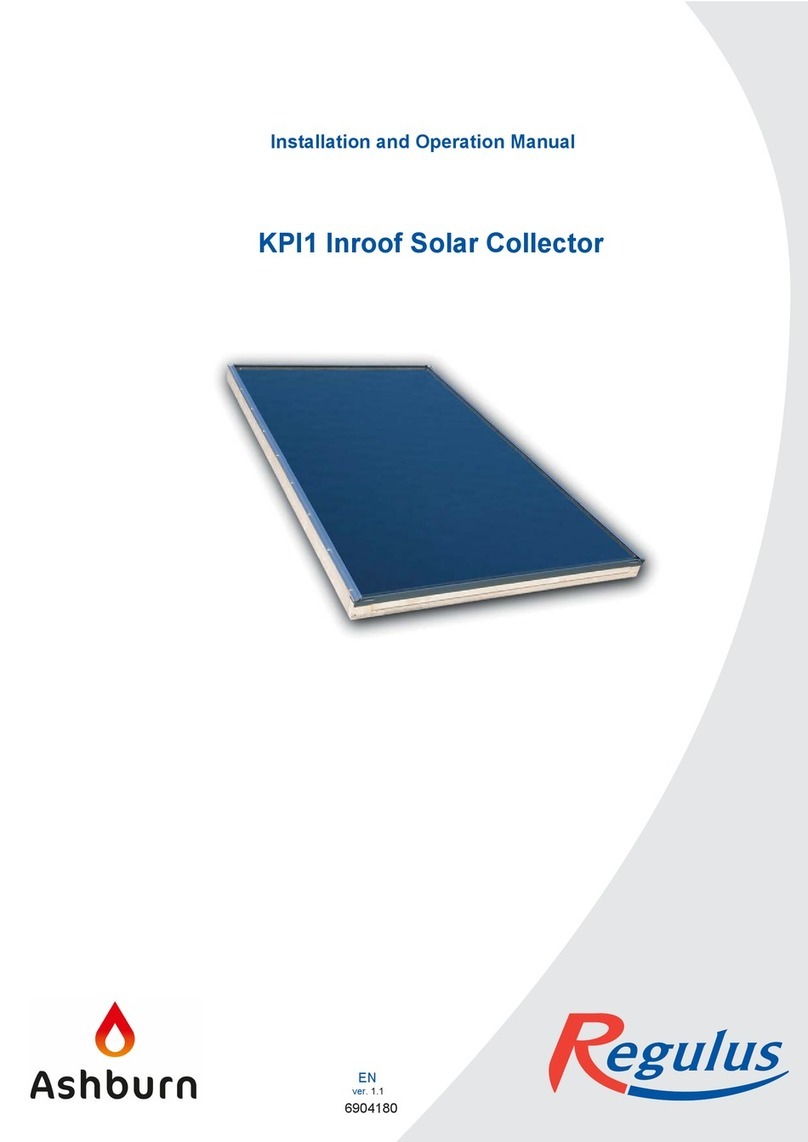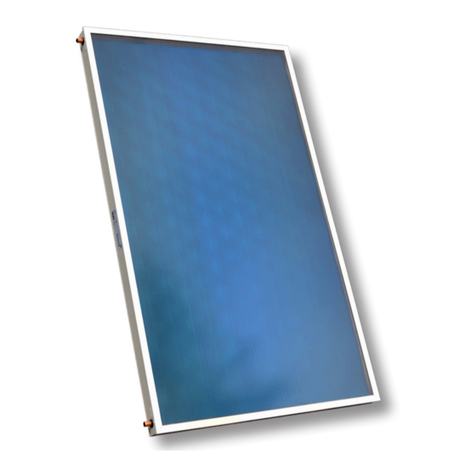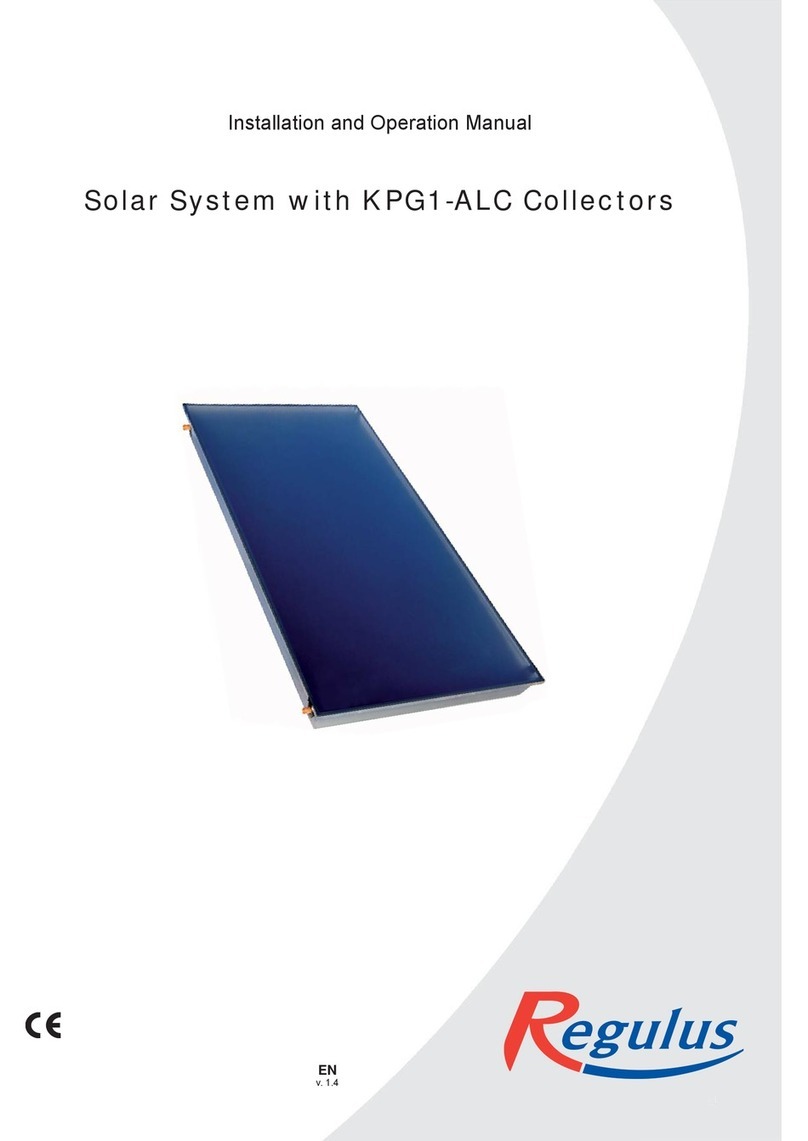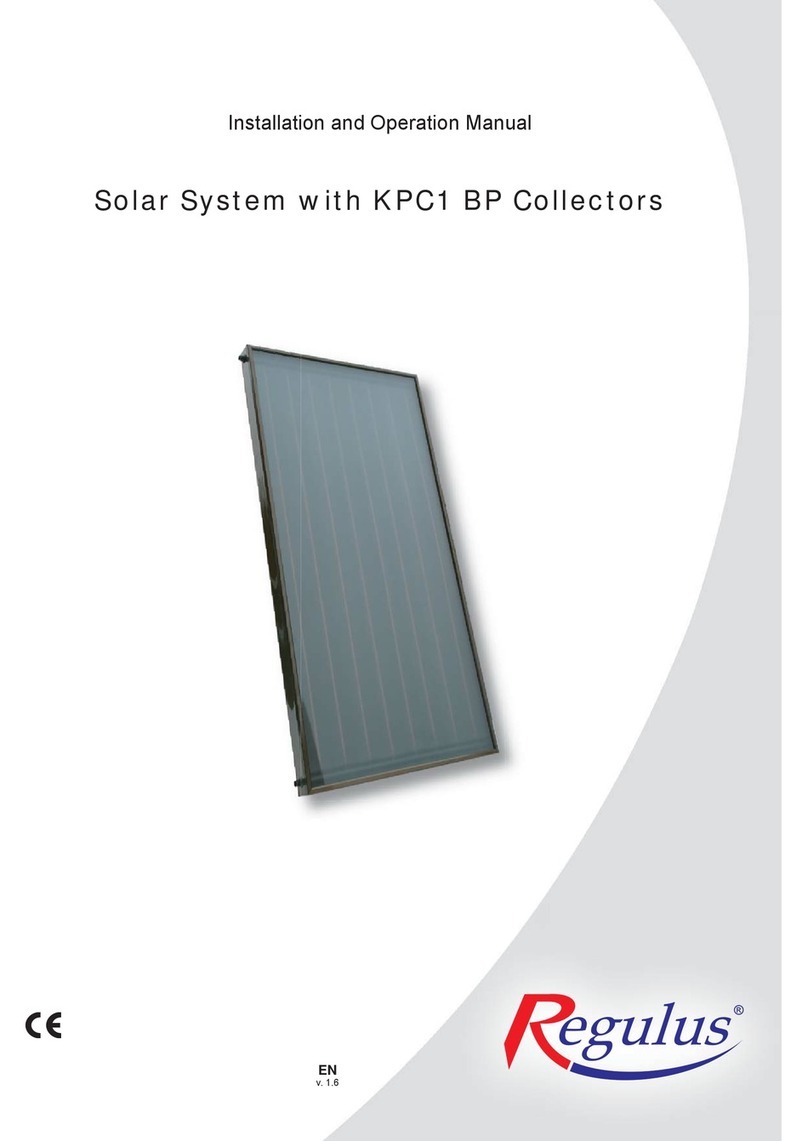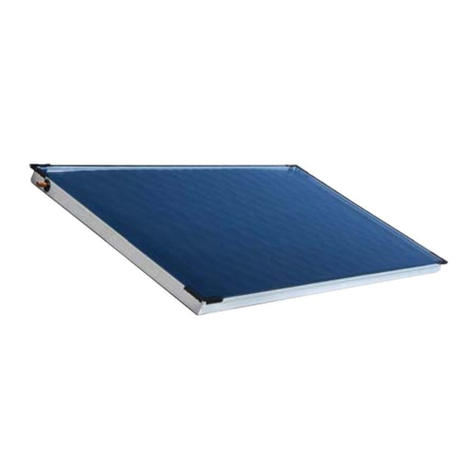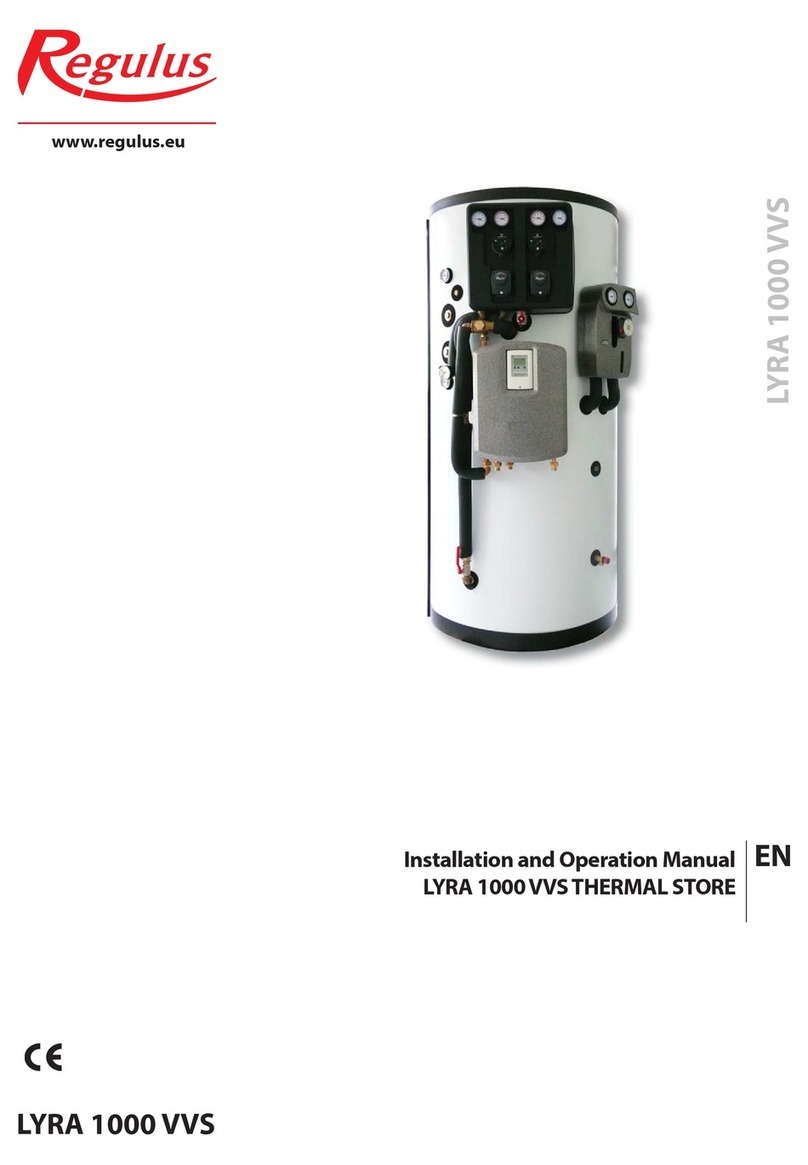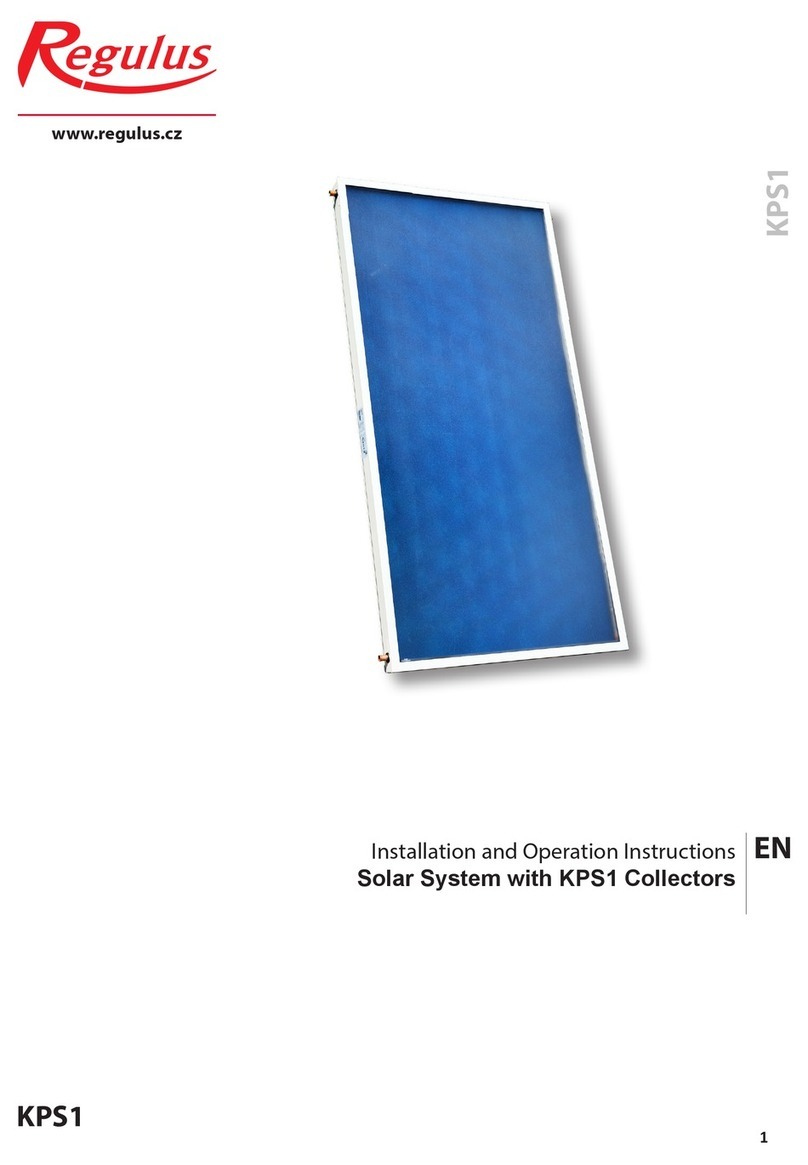
│2
CONTENTS
General Installation and Operation Instructions ............................................................................... 3
Collector Technical Data .......………………………………….………….............................................… 4
1 Delivery of Mounting System ..……………………..…………………..………................................... 5
2 Sloping Roof Mount ...………………………………...........………………...……................................ 6
2.1 Overview ...…………………....……………………………………………................................. 6
2.2 Roof anchor installation for sloping roofs ......…………………………................................... 7
2.2.1 Installation with roof anchors and auxiliary boards ..…………….......................... 7
2.2.2 Installation with roof anchors and rafters ………………………............................. 8
2.2.3 Installation with roof anchors for slate, shingle or metal roofs ….......................... 9
2.2.4 Installation with bolts for fixing rails onto a roof ................................................... 10
2.3 Installing rails onto roof anchors .......……………………………………................................. 10
2.4 Collector mounting .……………………………………………………….................................. 11
3 Connection Pipe Passage through a Roof ………………………………….…................................. 12
4 Flat Roof Mount .................……………………………………………………..…................................. 13
4.1 Overview ……………………………………….……………………………............................... 13
4.2 Flat roof support mounting ...............…………………………………….................................. 14
5 Hydraulic Connection ...……………………………………………………...……................................ 18
5.1 Collector connecting .......……………….....….…………………………………....................... 18
5.2 Collector interconnecting …………………......…………………………….............................. 18
6 Temperature Probe Positioning …………………………………………….……................................ 19
7 Pump Station ...........…………………………………………………………...……............................... 20
8 Expansion Vessel Sizing and Working Pressure Calculation ...........………............................... 21
8.1 Expansion vessel sizing .......……………………………………………...............................… 21
8.2 Calculation of a system working pressure .…………………………...................................… 21
8.3 Calculation of an expansion vessel preset pressure .....……………................................…. 21
8.4 Examples of calculating working pressure and expansion vessel pressure ....................…. 21
8.4.1 Example of calculating system working pressure ...................................……. 21
8.4.2 Example of calculating expansion vessel pressure .............................………. 21
9 Installation of Air Release Valves ..……………………………………………...............................…. 22
10 System Filling, Flushing, Leak Test and Air Bleeding ..........................….................................... 23
10.1 Filling ……………………………………………...............………...............................………. 23
10.2 Flushing ………………………………….......………………………...........................………. 23
10.3 Air bleeding ……………………….................…………………….....................................…. 24
10.4 Leak test .............................…………………………………………..............................……. 24
11 Commissioning …………………………..........……………………………......................................…. 24
12 Operation, Checks and Maintenance ...........……………………............…………......................…. 24






